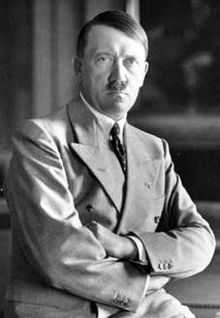German election and referendum, 1936
German election
and referendum, 1936
.svg.png)
|
|
|
|
All 741 seats in the Reichstag
371 seats needed for a majority |
| Turnout |
99.00% |
| |
Majority party |
|
|
| |
 |
|
|
| Leader |
Adolf Hitler |
|
|
| Party |
NSDAP |
|
|
| Leader since |
29 July 1921 |
|
|
| Last election |
661 seats, 92.11% |
|
|
| Seats won |
741
(Sole legal party) |
|
|
| Seat change |
 80 80 |
|
|
| Popular vote |
44,462,458 |
|
|
| Percentage |
98.80% |
|
|
| Swing |
 6.69% 6.69% |
|
|
|
|
Parliamentary elections were held in Germany on 29 March 1936.[1] They took the form of a single-question referendum, asking voters whether they approved of the military occupation of the Rhineland and a single party list for the new Reichstag composed exclusively of Nazis and nominally independent "guests" of the party. Like previous elections in Nazi Germany, it was characterized by high turnout, voter intimidation and a massively lop-sided result, with an official 99.0% turnout. In a publicity stunt, a handful of voters were packed aboard the airships Graf Zeppelin and Hindenburg, which flew above the Rhineland as those aboard cast their ballots.[2]
The new Reichstag convened for formulary procedures on 30 January 1937 to re-elect its Presidium and Hermann Göring as President of the Reichstag.
Results
| Party |
Votes |
% |
Seats |
|---|
| National Socialist German Workers Party (including blank votes) | 44,462,458 | 98.80 | 741 |
| Against | 540,244 | 1.20 | – |
| Invalid | – |
| Total | 45,002,702 | 100 | 741 |
| Registered voters/turnout | 45,455,217 | 99.00 | – |
| Source: Nohlen & Stöver |
References
- ↑ Nohlen, D & Stöver, P (2010) Elections in Europe: A data handbook, p762 ISBN 978-3-8329-5609-7
- ↑ The Associated Press. "Germans for Hitler 99 Per Cent Strong: All Ballots Against Nazi Held Invalid", Fairbanks (Alaska) Daily News-Miner. 30 March 1936. Page 1.
External links
|
|---|
| | Parliamentary elections | |
|---|
| | Presidential elections | |
|---|
| | European elections | |
|---|
| | Referendums | |
|---|
|
- See also elections in Baden-Württemberg
- Bavaria
- Berlin
- Brandenburg
- Bremen
- Hamburg
- Hesse
- Lower Saxony
- Mecklenburg-Vorpommern
- North Rhine-Westphalia
- Rhineland-Palatinate
- Saarland
- Saxony
- Saxony-Anhalt
- Schleswig-Holstein
- Thuringia
- East Germany
- East Prussia
- Lower Silesia
|
|
